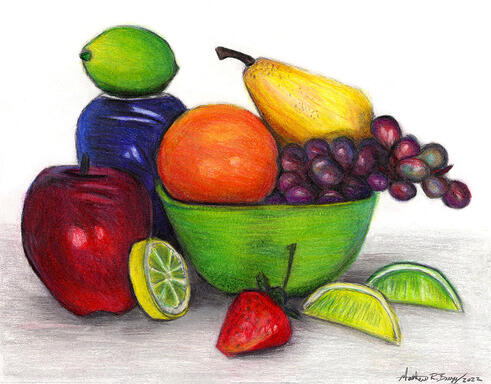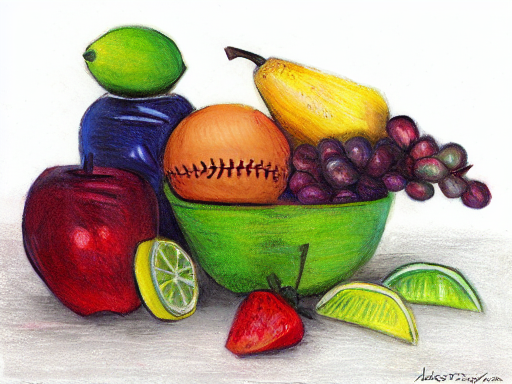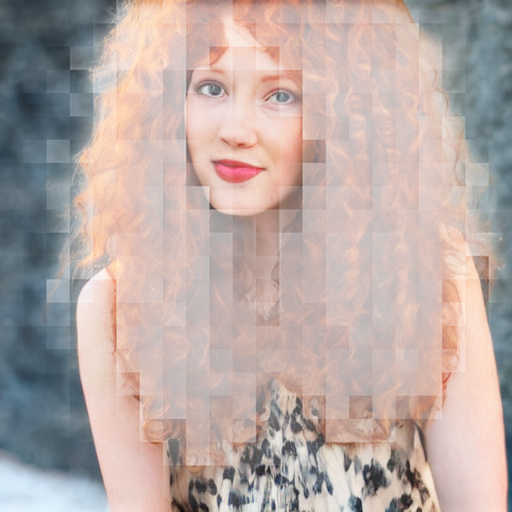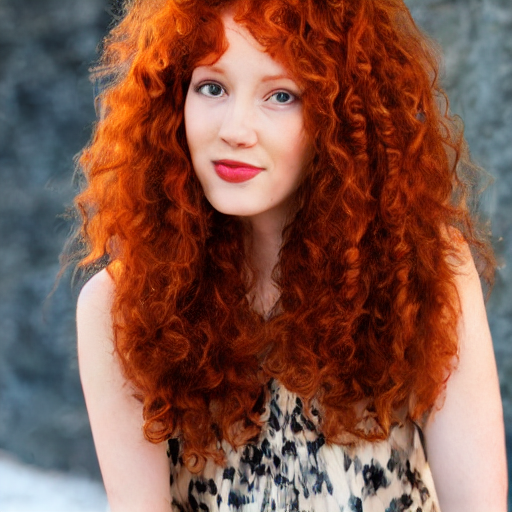- The !mask command takes an image path, a text prompt, and (optionally) a masking threshold. It creates a mask over the region indicated by the prompt, and outputs several files that show which regions will be masked by the chosen prompt and threshold. - The mask images should not be passed directly to img2img because they are designed for visualization only. Instead, use the --text_mask option to pass the selected prompt and threshold. - See docs/features/INPAINTING.md for details.
8.1 KiB
| title |
|---|
| Inpainting |
:octicons-paintbrush-16: Inpainting
Creating Transparent Regions for Inpainting
Inpainting is really cool. To do it, you start with an initial image
and use a photoeditor to make one or more regions transparent
(i.e. they have a "hole" in them). You then provide the path to this
image at the dream> command line using the -I switch. Stable
Diffusion will only paint within the transparent region.
There's a catch. In the current implementation, you have to prepare the initial image correctly so that the underlying colors are preserved under the transparent area. Many imaging editing applications will by default erase the color information under the transparent pixels and replace them with white or black, which will lead to suboptimal inpainting. It often helps to apply incomplete transparency, such as any value between 1 and 99%
You also must take care to export the PNG file in such a way that the color information is preserved. There is often an option in the export dialog that lets you specify this.
If your photoeditor is erasing the underlying color information,
dream.py will give you a big fat warning. If you can't find a way to
coax your photoeditor to retain color values under transparent areas,
then you can combine the -I and -M switches to provide both the
original unedited image and the masked (partially transparent) image:
invoke> "man with cat on shoulder" -I./images/man.png -M./images/man-transparent.png
Masking using Text
You can also create a mask using a text prompt to select the part of the image you want to alter, using the clipseg algorithm. This works on any image, not just ones generated by InvokeAI.
The --text_mask (short form -tm) option takes two arguments. The
first argument is a text description of the part of the image you wish
to mask (paint over). If the text description contains a space, you must
surround it with quotation marks. The optional second argument is the
minimum threshold for the mask classifier's confidence score, described
in more detail below.
To see how this works in practice, here's an image of a still life painting that I got off the web.

You can selectively mask out the orange and replace it with a baseball in this way:
invoke> a baseball -I /path/to/still_life.png -tm orange

The clipseg classifier produces a confidence score for each region it
identifies. Generally regions that score above 0.5 are reliable, but
if you are getting too much or too little masking you can adjust the
threshold down (to get more mask), or up (to get less). In this
example, by passing -tm a higher value, we are insisting on a tigher
mask. However, if you make it too high, the orange may not be picked
up at all!
invoke> a baseball -I /path/to/breakfast.png -tm orange 0.6
The !mask command may be useful for debugging problems with the
text2mask feature. The syntax is !mask /path/to/image.png -tm <text> <threshold>
It will generate three files:
- The image with the selected area highlighted.
- The image with the un-selected area highlighted.
- The image with the selected area converted into a black and white image according to the threshold level.
Note that none of these images are intended to be used as the mask
passed to invoke via -M and may give unexpected results if you try
to use them this way. Instead, use !mask for testing that you are
selecting the right mask area, and then do inpainting using the
best selection term and threshold.
Here is an example of how !mask works:
invoke> !mask ./test-pictures/curly.png -tm hair 0.5
>> generating masks from ./test-pictures/curly.png
>> Initializing clipseg model for text to mask inference
Outputs:
[941.1] outputs/img-samples/000019.curly.hair.deselected.png: !mask ./test-pictures/curly.png -tm hair 0.5
[941.2] outputs/img-samples/000019.curly.hair.selected.png: !mask ./test-pictures/curly.png -tm hair 0.5
[941.3] outputs/img-samples/000019.curly.hair.masked.png: !mask ./test-pictures/curly.png -tm hair 0.5
000019.curly.hair.selected.png

000019.curly.hair.deselected.png

It looks like we selected the hair pretty well at the 0.5 threshold (which is the default, so we didn't actually have to specify it), so let's have some fun:
invoke> medusa with cobras -I ./test-pictures/curly.png -tm hair 0.5 -C20
>> loaded input image of size 512x512 from ./test-pictures/curly.png
...
Outputs:
[946] outputs/img-samples/000024.801380492.png: "medusa with cobras" -s 50 -S 801380492 -W 512 -H 512 -C 20.0 -I ./test-pictures/curly.png -A k_lms -f 0.75

Inpainting is not changing the masked region enough!
One of the things to understand about how inpainting works is that it is equivalent to running img2img on just the masked (transparent) area. img2img builds on top of the existing image data, and therefore will attempt to preserve colors, shapes and textures to the best of its ability. Unfortunately this means that if you want to make a dramatic change in the inpainted region, for example replacing a red wall with a blue one, the algorithm will fight you.
You have a couple of options. The first is to increase the values of
the requested steps (-sXXX), strength (-f0.XX), and/or
condition-free guidance (-CXX.X). If this is not working for you, a
more extreme step is to provide the --inpaint_replace 0.X (-r0.X)
option. This value ranges from 0.0 to 1.0. The higher it is the less
attention the algorithm will pay to the data underneath the masked
region. At high values this will enable you to replace colored regions
entirely, but beware that the masked region mayl not blend in with the
surrounding unmasked regions as well.
Recipe for GIMP
GIMP is a popular Linux photoediting tool.
- Open image in GIMP.
- Layer->Transparency->Add Alpha Channel
- Use lasso tool to select region to mask
- Choose Select -> Float to create a floating selection
- Open the Layers toolbar (^L) and select "Floating Selection"
- Set opacity to a value between 0% and 99%
- Export as PNG
- In the export dialogue, Make sure the "Save colour values from transparent pixels" checkbox is selected.
Recipe for Adobe Photoshop
-
Open image in Photoshop
 -
Use any of the selection tools (Marquee, Lasso, or Wand) to select the area you desire to inpaint.
 -
Because we'll be applying a mask over the area we want to preserve, you should now select the inverse by using the ++shift+ctrl+i++ shortcut, or right clicking and using the "Select Inverse" option.
-
You'll now create a mask by selecting the image layer, and Masking the selection. Make sure that you don't delete any of the underlying image, or your inpainting results will be dramatically impacted.
 -
Make sure to hide any background layers that are present. You should see the mask applied to your image layer, and the image on your canvas should display the checkered background.
 -
Save the image as a transparent PNG by using
File-->Save a Copyfrom the menu bar, or by using the keyboard shortcut ++alt+ctrl+s++ -
After following the inpainting instructions above (either through the CLI or the Web UI), marvel at your newfound ability to selectively invoke. Lookin' good!
 -
In the export dialogue, Make sure the "Save colour values from transparent pixels" checkbox is selected.

